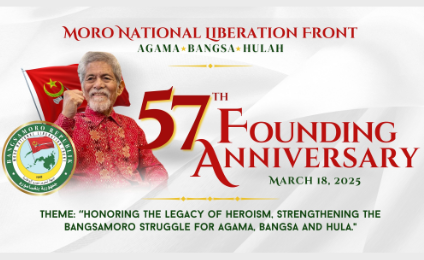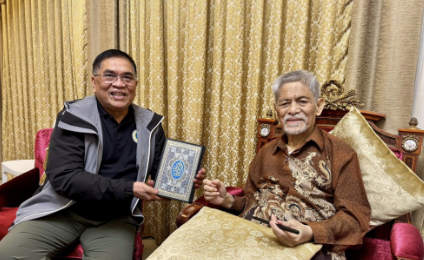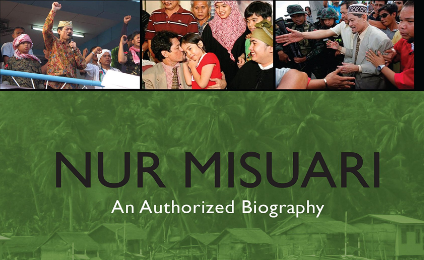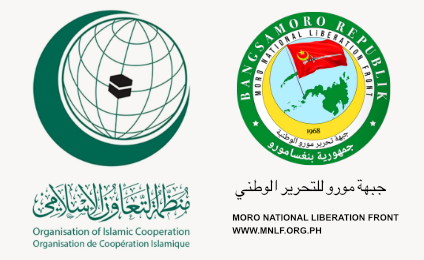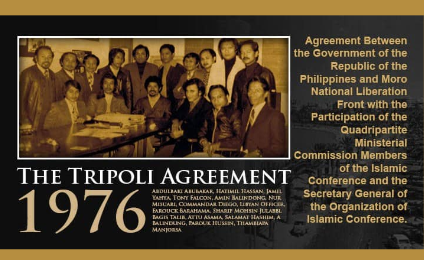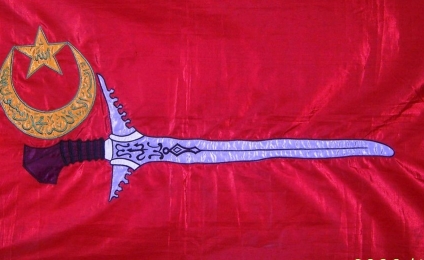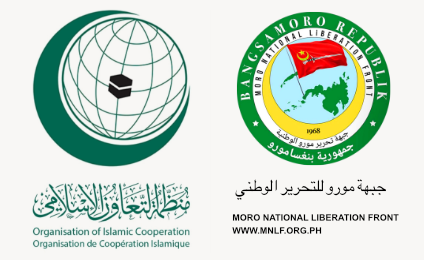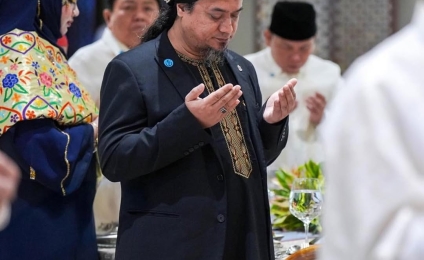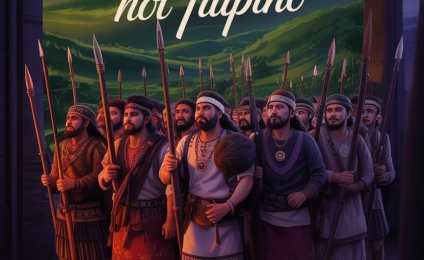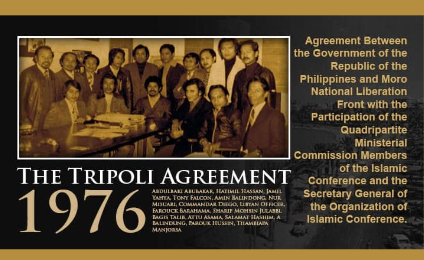The 1976 Tripoli Agreement was signed on December 23, 1976, in Tripoli, Libya by Carmelo Z. Barbero, representing the Government of the Philippines and Nur Misuari of the Moro National Liberation Front.[1] The agreement defined autonomous administrative divisions for Muslims in the southern Philippines, the establishment of an autonomous government, judicial system for Sharia law and special security forces, and the observance of a ceasefire.[2] The autonomous region was to have its own economic system, including an Islamic bank.[3]
Facilitators of the agreement included members of the Quadripartite Ministerial Commission of the Organization of Islamic Conference, headed by Ali Abdussalam Treki, representing Muammar Gaddafi, leader of the host country, and the OIC Secretary General, Amadou Karim Gaye.[4] The other members of the Quadripartite Ministerial Commission aside from Treki included representatives from Saudi Arabia, Senegal and Somalia.[1]
The following thirteen provinces in the southern Philippines were agreed upon by the parties involved to be included for autonomy: Basilan, Sultan Kudarat, Sulu, Lanao del Norte, Tawi-tawi, Lanao del Sur, Zamboanga del Sur, Davao del Sur, Zamboanga del Norte, South Cotabato, North Cotabato, Palawan and Maguindanao.[1]
During the negotiations, Marcos noted in his diary that Misuari and the Libyan diplomat Ali Treki kept insisting that "all of Mindanao, Sulu and Palawan be organized into one region. But they are willing to submit this to a referendum."[8] Marcos was inclined to agree since he was of the opinion that "Palawan, the three Davaos, the two Surigaos, the two Agusans, Southern Cotabato, Bukidnon, the two Misamis, possibly Lanao del Norte, Zamboanga del Norte and others"[8] would not want to be included in the Muslim autonomous region. A day before the agreement was signed, negotiations stalled and Gaddafi asked for Imelda Marcos to return to Libya to hasten the talks. Imelda was able to convince the Libyan leader via telephone to accept the Philippine President's proposal, which was to "submit the question of autonomy to the constitutional process of the Philippines"[9] for the thirteen provinces. The agreement was signed the following day.
Ferdinand Marcos would later implement the agreement by creating two autonomous regions (instead of one) consisting of ten (instead of thirteen) provinces. This led to the collapse of the peace pact and the resumption of hostilities between the MNLF and Philippine government forces.[10][11]
The Architect of the Tripoli Agreement
MNLF LEADING PIONEERS IN THE BANGSAMORO FREEDOM STRUGGLE TO REGAIN NATIONAL SELF-DETERMINATION AND INDEPENDENCE FROM PHILIPPINE COLONIALISM: Chairman of the Moro National Liberation Front (MNLF) Prof. Nur Misuari is shown in photo (sitting in center) with the pioneering officers and members of the MNLF Central Committee, including Dimas Pundato, MNLF Vice-Chaiman; Ustaj Salamat Hashim, MNLF Foreign Minister; Ustaj Abdulbaki Abubakar, MNLF Foreign Affairs Secretary General; Dr. Parouk Hussin, MNLF Deputy Foreign Minister; Dr. Tham Manjoorsa, MNLF National Intelligence Officer; Abdurasad Asani, MNLF Information Chairman; Ustaj Abdulmuin Kissaei, MNLF Libya Office Director, Ustaj Sharief Moksin Julabbi and other prominent MNLF leaders.” Photo courtesy of Sharief Julabbi



 – Awarded for his role in promoting peace and dialogue in the Southern Philippines, particularly in the Mindanao conflict1_small.png)
